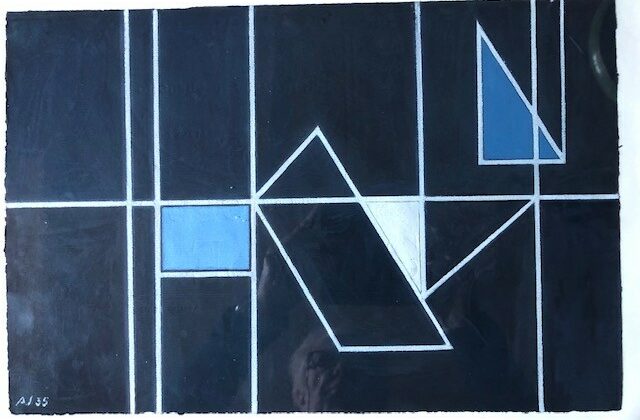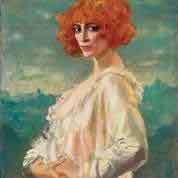De Chirico in Milan
Francesco Carelli – University of Milan
The Italian painter and writer Giorgio De Chirico was born in Volos (Greece) in an aristocratic Italian family. In 1906 he went to Italy, then lived in Florence, Milan, Ferrara, Rome, Venice and also abroad for some years, in Munich, Paris and New York.
He wrote in 1918: “We live in an elusive phantom world with which we gradually become
familial” and also: “…the demon in everything…the eye in everything… We are explorer ready for other departures…”
Jean Cocteau with his deep understanding of De Chirico art , wrote : “ … accuracy of the dream inaccuracy… use of truth to promote the false…”and also “De Chirico looks at usual things, also at ordinary everyday objects, from a different point of view, surprising and free from the consolidated logical sequence of relations” , and “ true realism consist in representing surprising things, that hidden under the veil of habit and we can no longer see (we are no longer able to see)”
It is very interesting to look at the unique world created by the artist, a meta-world inhabited by philosophers’ and modern poets’ thoughts and condition: the Stimmung (mood, spirit, atmosphere..) which he often speaks and writes about and which pushes him to create the enigma. It is mystery we feel in some moments, it is a modern look made only of shadows , something mysterious that is about to happen but has not yet happened in the intelligent suspension De Chirico staged by perspectives and also (real /true) Hitchcokian shots .
Once more, with his usual sensitive lucidity, Jean Cocteau said : “Some of De Chirico’s works smile to us with sky, oriflammes, military headgears, fishing floats. If we turn behind the picture, we’ll find a gun pointed at it and we’ll hear in a threatening tone “Smile or I’ll shoot”. That’s why these smiling works look anxious at us”.
De Chirico resorts to deception , first in family childhood paintings and in metaphysic ones. His works speak always about him, and Picasso and Guillaume Apollinaire recognize his genius and monitor him since his early youth. De Chirico’ myth is born immediately, in its contradictions and mysteries.
Not only invention of metaphysics by de Chirico, defined by Francesco Arcangeli “the most radical change of course in European (aesthetic) taste from impressionism onward”, but also the other De Chirico periods , from pictorial sumptuousness in the twenties and thirties, to neo baroque irony, and love for both his classical roots and current events and progress (railway stations and factories), recovering cinema sources and Thomas de Quincey and also Jules Vernes novels.
The exhibition is not in chronological order, but follows the evolution of De Chirico painting, not always recognized as really revolutionary and subversive. He was always a forerunner: he recalled Giotto in his Ferrara period works, and laid the groundwork of future Surrealism and created a new painting populated by archeologists, dummies, galloping horses, gladiators in farce fights, prehistorical animals playing with Martians, deformed bodies, and so on..
Many artists were inspired by De Chirico’ art in their literary or figurative works, but “No other body of critical writing on a major twentieth-century painter reveals such deep disagreement, such abutting contradiction, as that devoted to Giorgio De Chirico” (as underlined in 1982 Anthological Exhibition at MOMA in New York).
“Dear grandson Matteo, ( 8 years ) this portrait from a frame by famous painter De Chirico on exhibition now in Milan ( I’ll bring you to see it also ) strikes you to remember something you had seen in the portraits painted by Kazimir Malevich, that had made you curious so much at his exhibition ?”
“ I saw the frames and I saw that they don’t have the eyes , the mouth, they don’t have the face, they only have a wall piece and without ears “.



